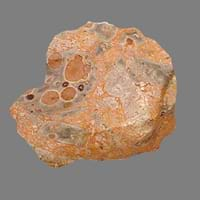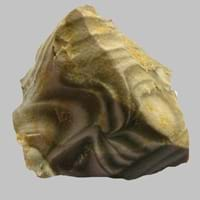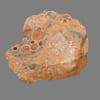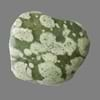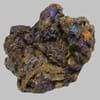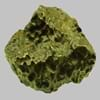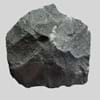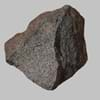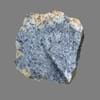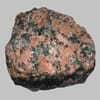Definition
Felsite is a very fine grained volcanic rock that may or may not contain larger crystals and light colored rock that typically requires petrographic examination or chemical analysis for more precise definition
Flint is a hard type of sedimentary rock that produces a small piece of burning material when hit by steel
Discoverer
Unknown
Unknown
Etymology
From English feldspar and -ite
From Old English flint - a type of rock mainly known for high hardness and for giving off sparks when struck
Class
Igneous Rocks
Sedimentary Rocks
Sub-Class
Durable Rock, Medium Hardness Rock
Durable Rock, Hard Rock
Group
Volcanic
Not Applicable
Other Categories
Fine Grained Rock, Opaque Rock
Fine Grained Rock, Opaque Rock
Texture
Arborescent Patterned, Vitreous
Banded, Rough
Color
Black, Blue, Brown, Green, Orange, Red, Tan, Yellow
Black, Brown, Green, Grey, Red, White
Durability
Durable
Durable
Scratch Resistant
Yes
Yes
Appearance
Layered, Banded, Veined and Shiny
Glassy or Pearly
Interior Uses
Decorative Aggregates, Flooring, Interior Decoration
Decorative Aggregates, Homes, Interior Decoration
Exterior Uses
Paving Stone, Garden Decoration
As Building Stone, As Facing Stone, Garden Decoration, Office Buildings, Paving Stone
Other Architectural Uses
Curbing
Curbing
Construction Industry
Arrowheads, Cutting Tool, Knives, Scrapers, Spear Points
Arrowheads, Cutting Tool, Spear Points
Medical Industry
Surgery
Not Yet Used
Antiquity Uses
Artifacts
Artifacts
Commercial Uses
Mirror, Jewelry
Creating Artwork, Gemstone, In fire-starting tools, Manufacture of tools, Metallurgical Flux, Jewelry, To ignite fire, Used in flintlock firearms
Types
Not Available
Not Available
Features
Available in Lots of Colors and Patterns, Clasts are smooth to touch, Splintery, Very fine grained rock
Clasts are smooth to touch, Easily splits into thin plates, Has High structural resistance against erosion and climate
Archaeological Significance
Monuments
Not Yet Used
Not Yet Used
Famous Monuments
Not Applicable
Not Applicable
Sculpture
Not Yet Used
Not Yet Used
Famous Sculptures
Not Applicable
Not Applicable
Pictographs
Used
Not Used
Petroglyphs
Used
Not Used
Figurines
Not Yet Used
Not Yet Used
Formation
Felsite is a fine-grained, hard rock which is a type of metasomatite, essentially altered basalt. It forms with or without crystallization, either below the surface as intrusive rocks or on the surface as extrusive rocks.
Flint is formed by the decomposition and compaction of various organisms such as sponges and diatoms under the water.
Mineral Content
Feldspar, Iron Oxides
Silicon
Compound Content
Aluminium Oxide, CaO, Iron(III) Oxide, FeO, Potassium Oxide, MgO, MnO, Sodium Oxide, Phosphorus Pentoxide, Silicon Dioxide, Titanium Dioxide
Silicon Dioxide
Types of Metamorphism
Burial Metamorphism, Contact Metamorphism, Impact Metamorphism, Regional Metamorphism
Not Applicable
Types of Weathering
Biological Weathering, Chemical Weathering, Mechanical Weathering
Not Applicable
Types of Erosion
Chemical Erosion, Glacier Erosion, Water Erosion
Chemical Erosion, Coastal Erosion, Water Erosion
Grain Size
Fine Grained
Very fine-grained
Fracture
Conchoidal
Conchoidal
Porosity
Very Less Porous
Highly Porous
Cleavage
Non-Existent
Non-Existent
Toughness
Not Available
1.5
Specific Gravity
2.6-2.7
2.5-2.8
Transparency
Translucent
Translucent to Opaque
Density
2.6 g/cm3
2.7-2.71 g/cm3
Resistance
Heat Resistant, Impact Resistant
Heat Resistant, Impact Resistant, Pressure Resistant, Wear Resistant
Deposits in Eastern Continents
Asia
Afghanistan, Indonesia, Japan, Russia
Azerbaijan, China, Russia
Africa
Kenya
Not Yet Found
Europe
Greece, Hungary, Iceland, Italy, Turkey
Austria, Belgium, Cyprus, Denmark, France, Germany, Italy, Malta, Netherlands, Poland, Portugal, Romania, Spain, Sweden, Switzerland, Turkey, Ukraine, United Kingdom
Others
Not Yet Found
Not Yet Found
Deposits in Western Continents
North America
Canada, Mexico, USA
USA
South America
Argentina, Chile, Ecuador, Peru
Bolivia
Deposits in Oceania Continent
Australia
New Zealand
New Zealand, South Australia
All about Felsite and Flint Properties
Know all about Felsite and Flint properties here. All properties of rocks are important as they define the type of rock and its application. Felsite belongs to Igneous Rocks while Flint belongs to Sedimentary Rocks.Texture of Felsite is Arborescent Patterned, Vitreous whereas that of Flint is Banded, Rough. Felsite appears Layered, Banded, Veined and Shiny and Flint appears Glassy or Pearly. The luster of Felsite and Flint is vitreous. Felsite is available in black, blue, brown, green, orange, red, tan, yellow colors whereas Flint is available in black, brown, green, grey, red, white colors. The commercial uses of Felsite are mirror, jewelry and that of Flint are creating artwork, gemstone, in fire-starting tools, manufacture of tools, metallurgical flux, jewelry, to ignite fire, used in flintlock firearms.
